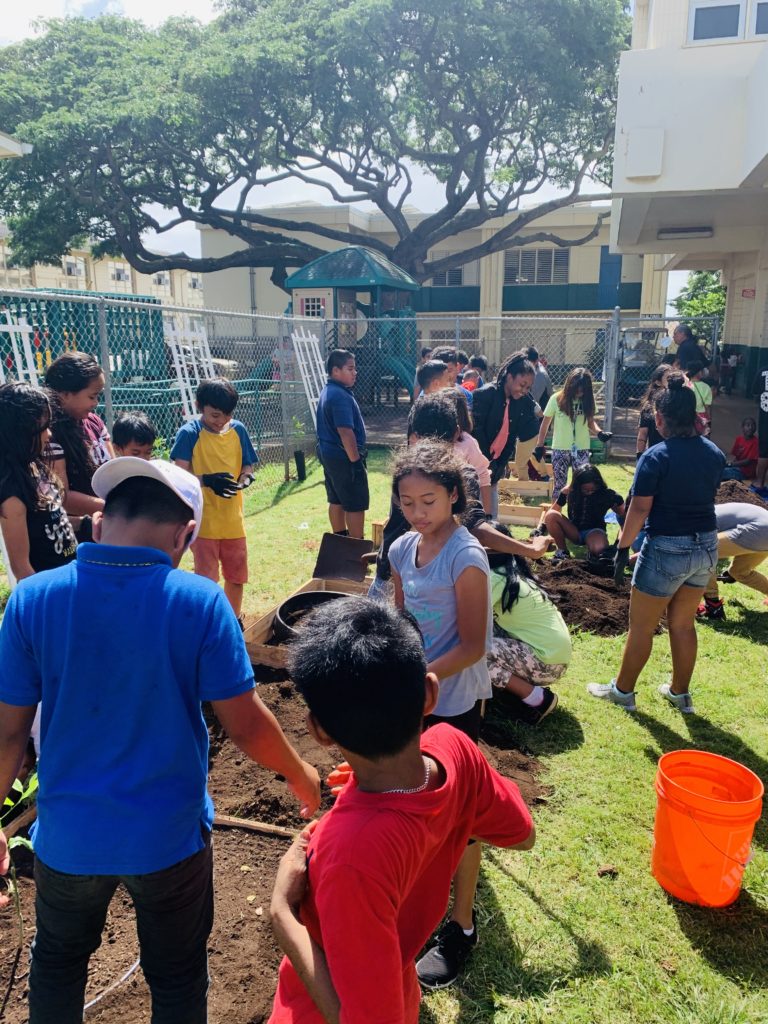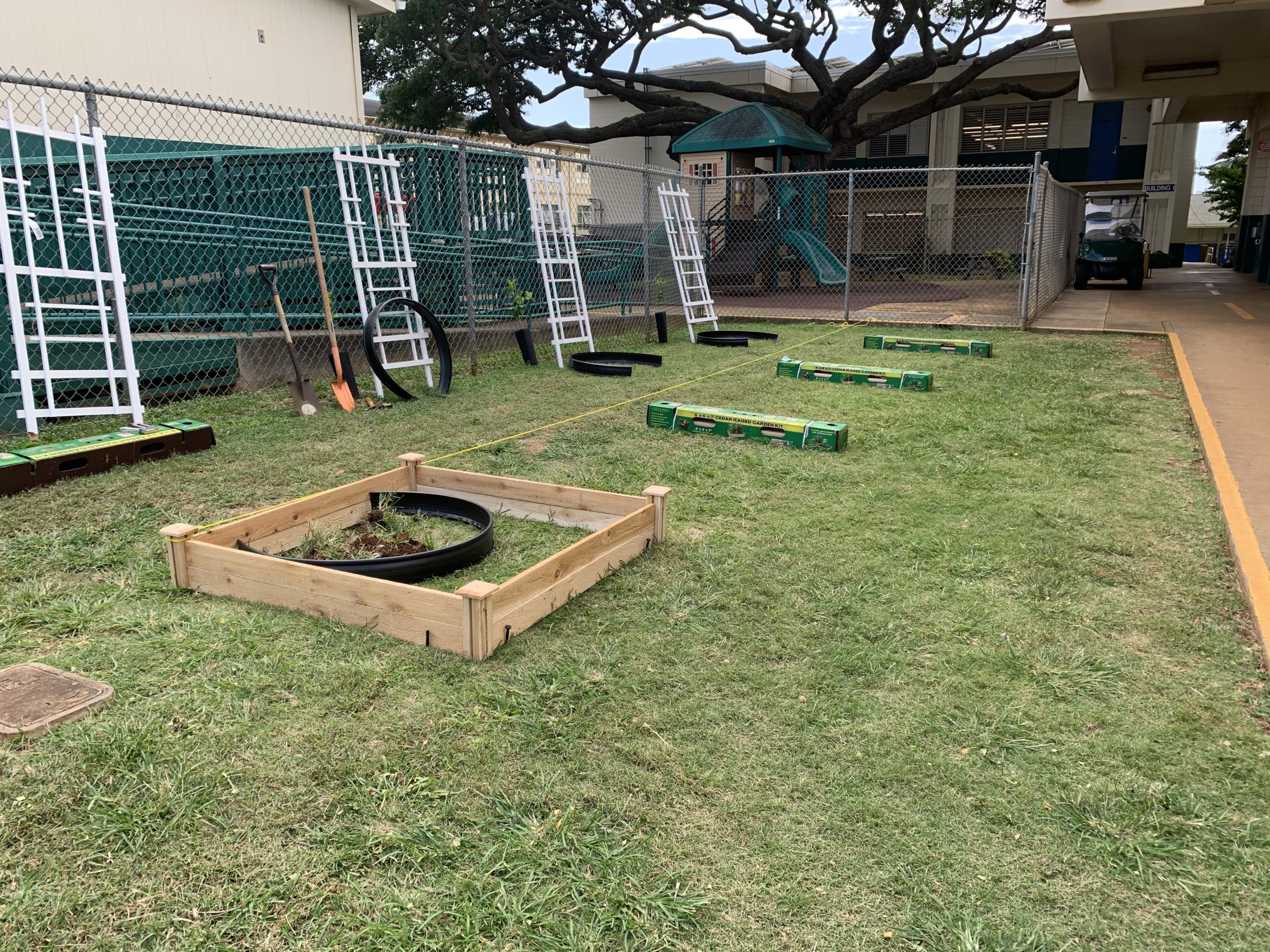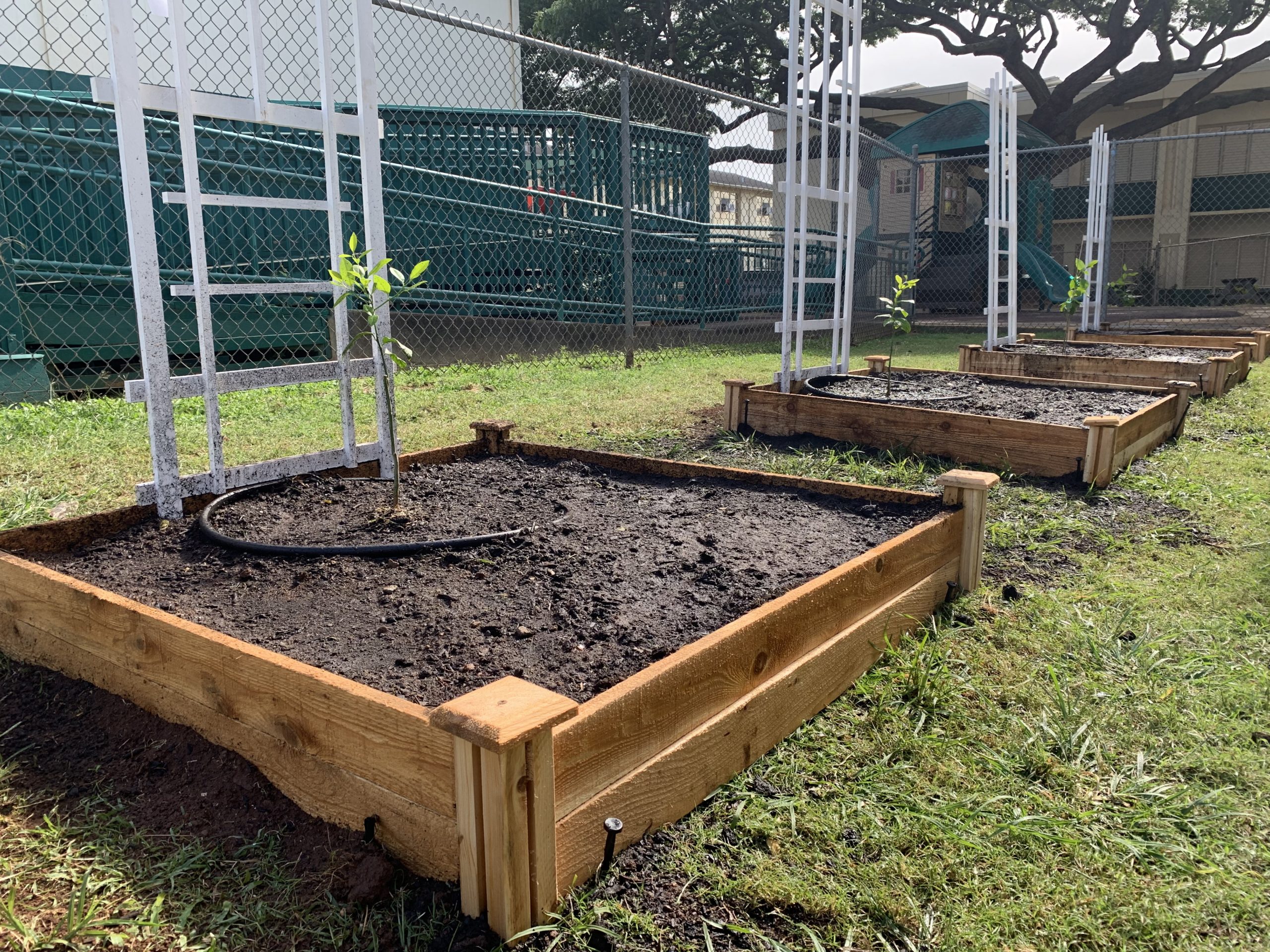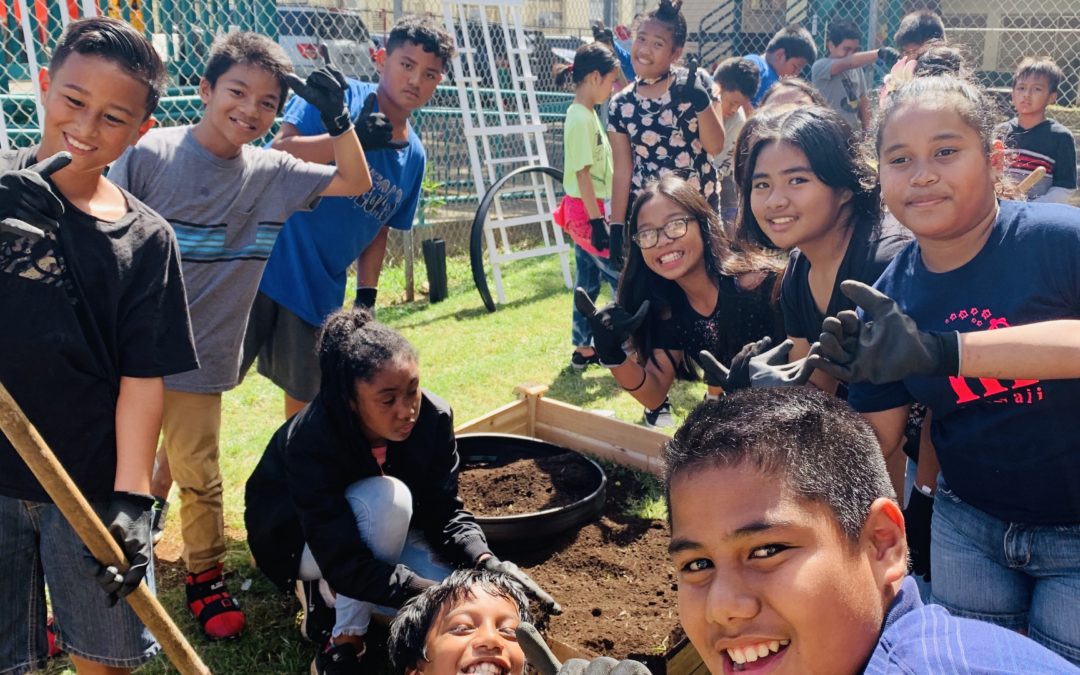Thanks to funding from Kamehameha Schools, Fern Elementary in Honolulu received and planted four lemon tree installs as part of a Project Lemon Tree Curriculum series for their 5th Grade classes. A huge mahalo goes to Ian Custino and Hailama Farden for making this program possible for Fern Elementary. Another mahalo goes to Principal Glen Miyasato for his quick action and vision to site the program, and to teachers Christine Shimomura, Jessica Canyon and Kate Ganiron for getting everyone digging today.
We met our goal of building four raised bed boxes, conditioning soils with compost, planting four meyer lemon trees and installing four trellises to support the lemons as they grow.
I (Uncle Steve) worked with 67 students and three teachers for 80 minutes with all learning factoids and planting techniques along the way, including:
The Importance of CO2 & Greenhouse Gas Reduction
The session started off with me, Chief Lemon Head, chatting about why we need to reduce CO2 and other greenhouse gases. As top reducers of CO2, lemon trees are highly beneficial in reducing greenhouse gases.

Hawaiian Lemon & Haole Sailor History
We also noted that lemons were the first crop cultivated in Hawaiʻi. They were cultivated here about 35 years before coffee and 100 years before sugarcane and pineapple.
Why lemons? Captain Cook brought them here because sailors are subject to a deadly disease called scurvy. After about eight weeks at sea without vitamin C, sailors can easily be affected by this disease. Because the voyage from Polynesia to Hawaiʻi by canoe only takes about three weeks, Hawaiian voyagers didnʻt encounter this problem.
And what about the fruit that we know as the Hawaiian Lemon? It’s actually a lime and comes from the rootstock that sprouted up from the first lemons.
Soil Science & Composting
We discussed the benefits of compost and added buckets of it to native soil dug from holes. To get even better soil, we saved the many worms (and a few cockroaches) that we found along the way and restored them to planting beds.
Students also learned NOT to stomp on soils because it takes the air out. That isn’t good for the plants. Standing outside of planting beds keeps soils plant-friendly, and students stay cleaner.

The setup: do a little and lett’em loose!
Building Skills
Students built grow boxes to keep lemons raised off the ground and help drainage. Lemons don’t like sitting in water, so raising them allows any excess water to easily run out.
We also installed planting beds with lawn guards to allow Companion Garden plants in the beds without disturbing the lemon tree roots. It was really fun to watch the students figure out how to build the box kits, stake them and complete them with composting.
As part of building, students also learned to align the boxes to a string that ran behind the boxes. They used a tape measure to measure it out to exactly four feet. This made the pattern uniform. They crushed it!
Agricultural Production of Lemons
As we planted lemon trees, students were taught to recognize shooters and thorns that needed to be trimmed off. We discussed the idea of grafting and explained how later classes can add additional citrus species to the same trees.
We also briefed them on the water schedule: two to three times per week for the first month and once per week after that. Teachers will implement a care schedule so that students can sign up for watering, feeding, weeding and pruning throughout the year.

The finished product: four lemon beds with lemon trees and trellises, ready for Companion Garden plants.
Next Up: Bedazzling Trellises & Companion Gardens
In the next couple of weeks, we’ll be working on naming each trees, one for each class. There is a competition to see which class can grow their tree the fastest!
Aunty Izzy will also help undertake Companion Gardens in the plant beds surrounding the trees! There are many Companion Garden possibilities: herbs, flowers, pest reducers and native species that are lemon-friendly and bee-friendly. (These are included in the Project Lemon Tree Curriculum.)
Stay tuned!
Congratulations to Fern Elementary 5th Graders for a job well done!!!
You guys were so fun, inquisitive and hard-working. You’re all first-string diggers, and you’re welcome on my team any day!
Love, lemons & Aloha,
Uncle Steve 🙂
We’d love to hear how you’ve applied the Project Lemon Tree Curriculum to your class! Leave a comment below or reach out to learn more about the program.



Recent Comments